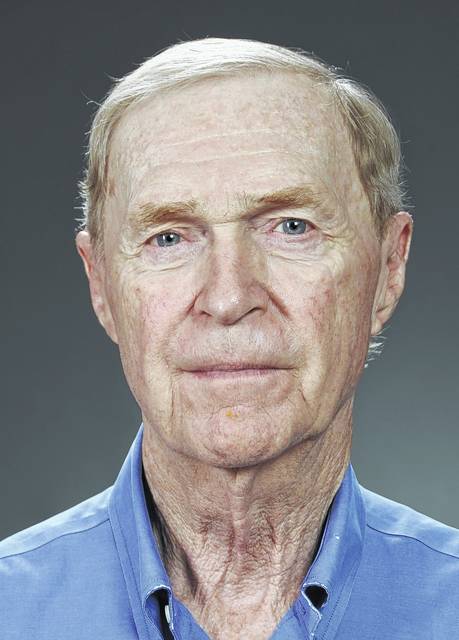The German war machine rolled over tiny Denmark in April 1940. With Denmark’s government under German control, the Danish ambassador to the United States assumed the authority to grant the U.S. the right to establish military bases on Greenland in 1941.
The U.S. needed to move a lot of aircraft and other military equipment to Europe. The military aircraft of that era didn’t have the fuel capacity to fly directly to Europe. Greenland was a refueling stop. One flight became disoriented because of bad weather, ran out of fuel, and made an emergency landing on the ice pack in 1942. The crews were rescued, but the planes were abandoned. Fifty years later, a team from Middlesboro, Ky., used hot water to “bore” a vertical shaft through the ice to the war bird. They recovered one airplane. It was buried under 268 feet of ice. That P-38 was meticulously restored and roared into the sky on the first flight of its second life in 1992.
Greenland is a huge sheet of ice 1,500 miles long and more than 600 miles wide, and the average ice thickness exceeds a mile. Ice covers most of the land mass. Most of Greenland is north of the Arctic Circle.
During the potentially suicidal nuclear stand-off between the U.S. and the Russians, Greenland was considered to be vital to the U.S. capability to fly bombers that could reach key targets in Russia. In 1951, the cooperative Danes renewed the U.S. right to use Greenland for military operations. America hurriedly established a large air base at Thule, Greenland. Without informing the Danish government, the U.S. attempted to establish tunnels under the ice that would have been used to hide nuclear weapons and missiles.
According to Donald R. Prothero writing in “When Humans Nearly Vanished,” the U.S. planned to install 2,500 miles of tunnels and 600 nuclear weapons. But scientists soon discovered that the under-ice tunnels used for routine work stations were collapsing. The weight of the ice constantly pushes the fringe ice into the sea where it eventually breaks and forms icebergs. That project was abandoned. The bombers were soon replaced by intercontinental ballistic missiles, a fleet of nuclear capable submarines, and a fleet of aircraft carriers. Greenland lost its military significance.
The Greenland ice sheet became very significant for scientific investigation of climate change research pursued by both American and European scientists. Ice cores, like tree rings, are a record of atmospheric conditions. In 1993, American scientists took core samples from the thickest part of the ice. The ice was stacked 1.9 miles above the land mass. Two thousand years ago, the Romans used slaves to smelt silver ore in Spain. That produced a lead residue and rose in smoke and some of it deposited in snowfall on Greenland. The lead residue in the ice cores reveals a timeline that corresponds to historical records. The ice cores also reveal evidence about previous climate conditions.
Satellites are now used to precisely measure the altitude of the ice. Diminishing altitude indicates less ice. Other satellites measure the gravity of the ice sheet. Gravity is a variable that depends on mass. Decreasing gravity indicates less ice. Another type of satellite can sense the liquid water, if any, that forms on the surface of the ice sheet during the summer months. More water indicates warmer weather.
The U.S. government has never paid Denmark for the privilege of using Greenland. Recently, the U.S. replaced Danish and local contractors, who had provided routine maintenance and logistics services, with U.S. contractors.
America first.

